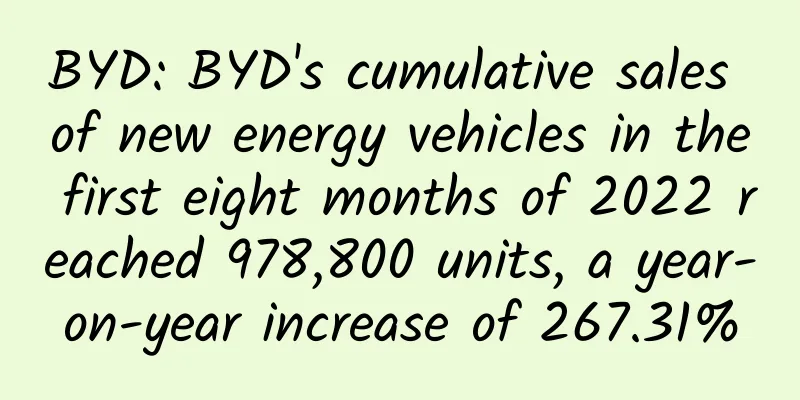Data-driven design: How to improve registration conversion rate?

|
Data-driven is a buzzword. Many Internet companies are talking about growth, especially the fast-growing companies from Silicon Valley. Rapid growth is the core driving factor for the rising valuations of Internet companies. All valuation cores are based on "growth", which is why some Internet companies have high valuations . Behind "growth" is an organic combination of user experience, activity, retention rate and monetization. The core of growth hacking is productization, dataization and operationalization . Analytical thinking and technical implementation capabilities are the core of technological products: the internal form of analytical thinking is engineering product thinking, and the external form is digital marketing thinking. That is to say, we can use engineering product methods plus data analysis methods to promote user and business growth. This kind of engineering and analytical thinking is to break down a big problem into a series of small problems, and then make rapid improvements to each small problem. Many small iterations accumulate to significantly improve the overall product experience and ultimately produce significant commercial effects. Registering and activating users is the beginning of growth. Today we will take "registration" as an example to talk about how to develop and iterate the registration process from the perspective of data-driven products. Effectively obtain conversion rates at every step of the registration processFirst, if you need to monitor conversion rates at every step in the sign-up process, how do you plan this? My plan is this: This method will help you create a very basic growth model - imagine the product as a step-by-step conversion funnel. At the same time, you must think from the user's perspective, rather than the product information structure. In the past period of time, it has been found that many product managers start thinking about product design from the perspective of product functions and information framework. This often produces many design ideas that are inconsistent with the user's real experience, resulting in a loss of grasp of the real user experience. Therefore, when product operations and product managers consider the registration flow, they don’t just start from registration, but imagine which channel users generally come from and start with their entry user experience. For example, if a new visitor comes to your registration or app download page, what will he see and so on. From a simple report to a forecast and prediction of the futureBy adding the "time" indicator to the operational analysis report, you can immediately see the conversion rate of each step. Once you have a basic conversion funnel built, you’ll know how your entire sign-up flow converts. However, the conversion rate of each step cannot tell you what to do. Next, we need to make this model predictive and track future goals quantitatively to simulate the effects that can be seen in different decision-making scenarios. For example, if the registration effect of the second step increases by 5%, how much growth can be achieved? How much growth can be achieved if the third step increases by 20%? In this way, you can decide which step to optimize for the best and maximized effect. Taking the conversion rate above as an example, the conversion rate of the first step is 16%, the conversion rate of the second step is 39%, and the conversion rate of the third step is 92%. If we want to optimize one of the steps, a cost-effective method is to optimize the part with the highest attenuation, which is the first step, rather than the last step of 92%, which is already perfect. This is a big step forward. From a state where we don't know what is happening, we can understand what has happened in history and predict the possible growth of new users in the future. Because multiple factors can affect user acquisition, it is necessary to continuously observe the daily registration conversion rate. Once the registration rate is found to suddenly increase or decrease, the core cause can be found immediately to help the next product iteration. A practical example A certain enterprise service website has two registration flows. One requires very little to be filled in each step, but there are many steps; the other has very simple steps, but more information needs to be filled in on each page. A product manager wants to know which one will have a higher conversion rate? Suppose this SaaS product has 4 registration pages: After confirming this visual virtual registration flow, the next step is to measure the conversion rate of the product between each step. Here you need to use data analysis products, such as GrowingIO, Google Analytics, Mixpanel and other refined operation tools , or establish these indicators in your own database. From the table above, we can determine which step has the most user attenuation. The next step is how to reduce this attenuation, such as shortening the entire registration process as much as possible. To see how the model works, let’s remove the third page from the signup flow and move the required information to the second page. After the change, it will look like this: The next step is to verify whether such adjustments can increase the registration conversion rate: Step 1 : Create a draft model of the simplified sign-up process and continue to refine the reporting to measure conversions at each step. The most important change here is that the information that originally required two pages to fill in has been turned into one page. The model includes a jump rate between three page functions, for example, increasing the registration rate from 5.83% to around 8% (an increase of around 30%). Before executing, you need to think quickly about whether this change is worth it? Is there a better way to achieve greater improvements? The most important thing is to be prepared to use data analysis tools to measure the actual conversion effect. Step 2: Implement these design changes through engineers. Many details are omitted here. Step 3: Conduct quick data analysis. 1.1 Check the data results to see whether the change is in line with expectations and whether it improves the overall conversion rate. 1.2 Break down the conversion funnel and analyze it in different dimensions. For example, if we break down the conversion rate by browser , we can see that Chrome’s conversion rate is 12%, while IE’s conversion rate is 1.4%, a difference of nearly ten times. However, IE’s page views are also large, close to 20% of the total. Therefore, our next optimization goal is to find out why IE has a low conversion rate and focus on fixing it. As a result of the fix, we expect the number of IE users to increase, thus entering the next product iteration cycle. 1.3 Not all changes are in line with expectations. In many cases, it may prove that the changes are problematic. For example, if we see a decrease in conversion rate, we must cancel the change immediately. A very important point in product iteration is to obtain important data from product changes. This data comes from the product and users and is used to compare with your expectations. This will make your product intuition more and more proficient, and more importantly, it will not waste a lot of time and resources to verify the pros and cons of a product improvement. The core conclusion of data-driven is to help product managers think systematically about certain product decisions. At the same time, it can quickly verify product hypotheses. Although there is never the best or worst design itself, and you will never get a black-and-white answer, data-driven is undoubtedly a better choice than product changes based on emotions and intuition (thinking). Because growth is a systematic and continuous process, a scientific and systematic approach will bring certainty and measurability to continuous growth, and measurability is a necessary condition for sustainability. Many Internet entrepreneurs need to see results "immediately" after purchasing data analysis products. This is unrealistic because data-driven growth is something that needs to be focused on and executed continuously every day, every week, every month, and every year. As long as you continue to execute and optimize, you will definitely see geometric results. Successful Silicon Valley Internet companies such as Facebook, LinkedIn, Twitter, Airbnb, Uber, as well as successful domestic Internet companies have verified the effectiveness of this framework. Are you still waiting? ASO optimization service click link: ASO optimization service introduction IOS accelerated review click link: //www.opp2.com/8854.html APP Top Promotion (www.opp2.com) is the top mobile APP promotion platform in China. Welcome to follow our official WeChat public account: appganhuo [Scan the top APP promotion WeChat QR code to get more dry goods and explosive materials] |
<<: An information flow advertising landing page worthy of collection by all industry professionals
>>: How much does it cost to develop a children’s clothing mini program in Jilin?
Recommend
Xiaohongshu Marketing Creates Hot Products from 0 to 1
The budget is not enough. How can we do a good jo...
Exclusive interview: An article that helps you truly understand DSP advertising
Although DSP and information flow have been aroun...
What are the reasons for Douyin account blocking? Why are TikTok accounts banned?
Tik Tok is one of the most popular channels at th...
Why is 2015 a breakthrough year for artificial intelligence?
Computers are "opening their eyes," say...
Report: Huawei's Hongmeng will reach 2% of global market share in 2020 and become the fifth largest operating system
Counterpoint pointed out that it is expected that...
Jack Ma's speech in London: China will have 500 million middle class people in 10 years
[[152882]] According to foreign media reports, Al...
The marketing secret behind Lancôme’s nationwide popular promotions!
Recently, Lancôme's Spring Festival Garden Pa...
User growth: How to establish a user perspective?
What is the user perspective? This is actually a ...
Bee: I love to pick the sweetest wildflowers on the roadside.
I am Dong Dong Meow Talking animals are so fun! T...
He doesn't exercise for even a second, but his grip strength is twice that of anyone else. Who is he?
Three-toed sloth Image credit: Unslpash Sloths ar...
How to make App sharing stand out like Keep?
When the product content and quality have reached...
A new breakthrough in supersonic flight! Will “Somersault Cloud” open a new era of aviation?
Author: Li Chuanfu Shi Xiangqi On December 17, 20...
The maintenance cost of an electric car is higher than that of a used car. Besides blowing up the car out of anger, what else should you pay attention to?
With the rapid development of the new energy vehi...
The latest and most complete tutorial for entering Douyin Store
Douyin's ability to sell products is obvious ...
Does dialing 12369 work?
Of course I called, and my colleagues answered. T...









